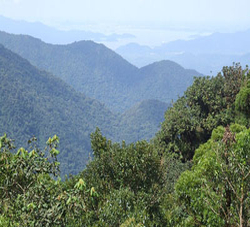“It is a forgotten process in the global carbon circulation of the vegetation,” Huth states. This aspect has been not directly included in the calculations of the IPCC (Intergovernmental Panel on Climate Change). “However, this effect should urgently be taken into account,” the ecologist demands.
The UFZ scientists’ results are also interesting for practical aspects in climate protection policy. On the one hand, it makes sense to require a minimum size of at least around 10,000 hectares for forest island areas because the relative loss of carbon is only minimal at the edges at that size. On the other hand, the peripheral areas and not the interior parts of forests should be used for forestry or agriculture in future, since the loss of biomass in these areas does not have as much of an effect.
For the first time, this examination shows a methodical way in which ecological effects in small areas can be used for large-scale environmental assessments. Additional studies are planned.
Details of the Study:
Sandro Pütz, Jürgen Groeneveld, Klaus Henle, Christoph Knogge, Alexandre Camargo Martensen, Markus Metz, Jean Paul Metzger, Milton Cezar Ribeiro, Dantas de Paula, M. & Andreas Huth. Long-term Carbon Loss in Fragmented Neotropical Forests. Nature Communications 5:5037 doi: 10.1038/ncomms6037 (2014).
Source: UFZ.

















